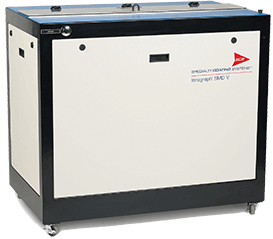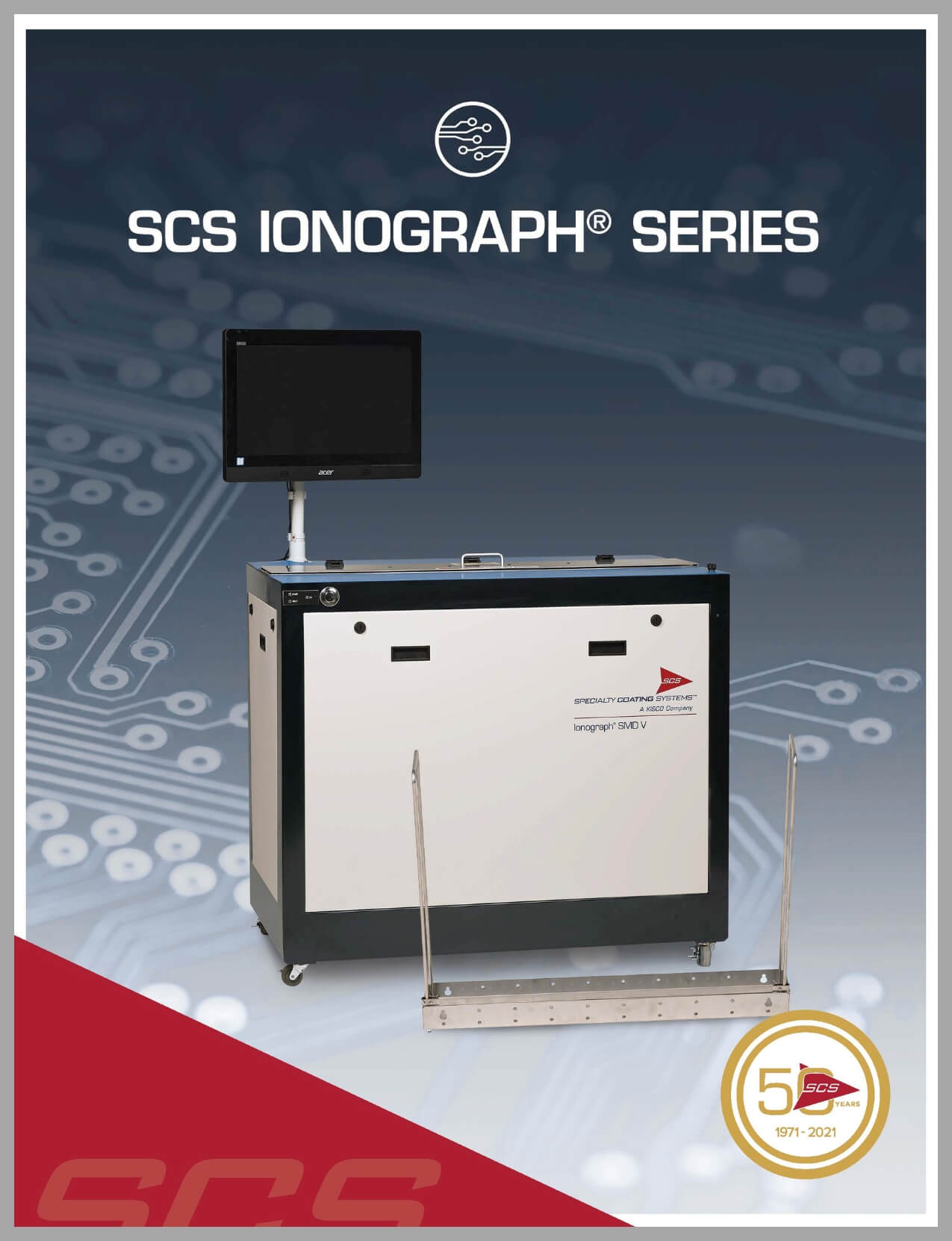Ionic Contamination Test Systems
Ionograph® SMD V

Dynamic testing of ionic contamination is a widely approved and followed standard. So, too, is the equipment that makes it possible — SCS Ionograph®. Available in different models, the SCS Ionograph is the industry standard of testing technology.
Product Information
The SCS Ionograph® is the industry standard for ionic contamination testing specified in commonly used cleaning standards. Using the “dynamic” testing method, this line gives you a reliable testing solution at an affordable price. Plus, the SCS Ionograph series is available in four newly redesigned models – the Ionograph SMD V and bench top modules for small, standard and large parts — all operated by our advanced SCS PowerView™ software.
SCS Ionographs offer customers reliable and efficient testing capabilities, including:
- Compliance with industry specifications including MIL-STD-2000A, IPC-TM-650 and ANSI/J-STD-001
- Control of aqueous and semi-aqueous cleaning processes for bare and assembled printed circuit boards
- Control of both the cleaning and the no-clean processes
- Testing to prevent corrosion or product performance problems associated with ionic contamination
- Cleanliness testing of performance-sensitive small parts
- Cleanliness testing of cleanroom specific products such as gloves, fixtures, assembly tools and critical assembly components used in precise manufacturing
- Process control of no clean/low residue processes, including spray fluxer set up and monitoring
SCS Ionograph SMD V Features
- Designed for large part ionic contamination testing in a production environment
- Submerged agitation jets and optional heated extract solution provide outstanding sensitivity
- Available with convenient onboard all-in-one computer or tablet
- Operated with SCS PowerView software
- Test cells available in four test cell sizes
About heated solution testing.
The SMD V gives you the option to test with a heated solution. As IPC-TM-650 describes the benefit, testing with heated solution enables you to “accelerate and improve the efficiency of extraction of ionic material from poorly accessible regions, such as under surface-mounted components.”
Specifications


